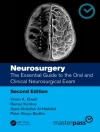‚Robotic Urologic Surgery‘ is a technical manual for the various robotic approaches to robotic urologic surgical procedures with helpful hints to avoid pitfalls.
The book provides instructions on how to develop a successful robotics program and learn the various techniques, and improve outcomes. The chapters are written by leading robotic urologic surgeons around the world. The body of data available is reviewed using comparisons in table format and supported by schematic diagrams and anatomic photographs to illustrate the concept being discussed.
An accompanying DVD gives instructional content.
This is an essential reading for all urologists as a reference to establish a robotics program, refine their surgical technique and provide information to patients.
Inhaltsverzeichnis
Robotic Urologic Surgery: An Introduction and Vision for the Future.- Robotic Surgical Systems.- Multispeciality Applications of Robotic Technology.- An Overview of Adult Robotic Urologic Surgery.- Essential Elements of Building a Robotics Program.- Principles and Lessons in a Transition from Open to Robotic-Assisted Laparoscopic Prostatectomy.- Training: Preparing the Robotics Team for Their First Case.- Patient Selection and Perioperative Management.- Anesthetic Considerations and Management.- Patient Positioning for Robotic Urologic Procedures.- Transperitoneal Trocar Placement.- Extraperitoneal Access.- Robotic Radical Prostatectomy: A Step-by-Step Approach.- Clinical Pearls: The Approach to the Management of Difficult Anatomy and Common Operative and Postoperative Problems.- The French Experience: A Comparison of the Perioperative Outcomes of Laparoscopic and Robot-Assisted Radical Prostatectomy at Montsouris.- The French Experience: The St. Augustin Transition from the Laparoscopic to the Robotic Approach.- The Oncologic Outcomes of Robotic-Assisted Laparoscopic Prostatectomy.- Anatomic Basis of Nerve-Sparing Robotic Prostatectomy.- Alternative Approaches to Nerve Sparing: Techniques and Outcomes.- Management of Postprostatectomy Erectile Dysfunction.- Robotic Pyeloplasty.- Robot-Assisted Radical Cystectomy and Urinary Diversion.- Complications of Robotic Surgery and How to Prevent Them.- Applications of Robotics in Pediatric Urologic Surgery.- Robotics and Infertility.- Robotic Urogynecologic Surgery.- The Future of Telerobotic Surgery.
Über den Autor
Vipul Patel, MD, is director of Robotic and Minimally Invasive Urologic Surgery, associate clinical professor of Urology and Bioinformatics at The Ohio State University. He serves as an attending physician at OSU Medical Center and is a member of the OSU James Cancer Hospital prostate cancer treatment team. Patel also is director of the minimally invasive laparoscopic surgery fellowship training program at OSU. Dr. Patel is an internationally recognized expert in minimally invasive laparoscopic and robotic urologic surgery. His clinical interests involve urologic cancer and laparoscopic reconstruction with special emphasis on the care of patients with prostate and kidney cancer. He has performed more than 1, 500 open, laparoscopic and robotic surgeries. His experience of almost 1, 000 robotic surgeries is one of the largest in the world. He has served on the Board of the American Cancer Society and has led a prostate cancer support group called ‚Man to Man.‘ This group serves to provide individualized support to patients and the families of men with prostate cancer. Yearly they have an event to raise awareness of prostate cancer called Relay For Life. Dr. Patel is a member of several professional societies including American Urological Association, Society of Laparoscopic Surgeons, Robotic Surgery Society and the American College of Surgeons. He is a reviewer for the professional journal Urology and has received numerous awards for his expertise in laparoscopy and patient care. He has published several articles on urologic cancer, urology and robotics.












